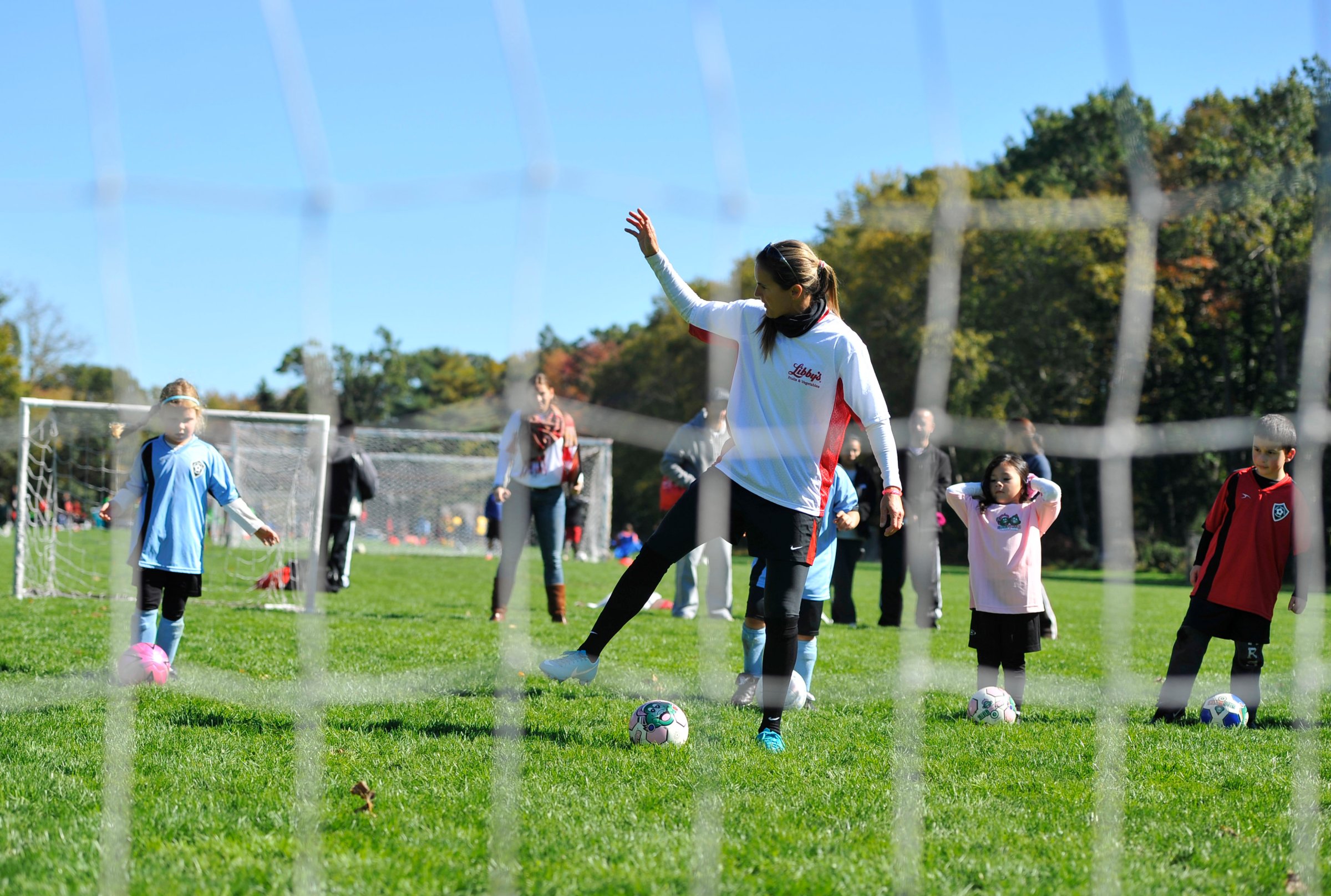
In an effort to raise awareness of the risks of heading in soccer, soccer superstar Brandi Chastain announced earlier this month that she will donate her brain to concussion research when she dies someday. Her decision is a step toward filling the gaps in what we know about the causes and effects of concussion on the female brain.
Women are at greater risk than men of concussions in both high school and college athletics, yet the attention and research is focused on male athletes. Scientists don’t know why girls and women report more concussions than their male counterparts, especially given that most female sports have fewer collisions than male sports. Theories include differences in neck muscles, hormones or willingness to acknowledge symptoms.
The progress of girls and women in sports since Title IX legislation was passed in 1972 has been tremendous. Young girls are in recreation soccer leagues at higher rates than ever. The number of girls playing high school sports has grown from about 300,000 to more than 3 million. And years of girls having greater access to sports was probably a key factor in the American Women’s Soccer team dominating the 2015 World Cup.
Of course with this greater equity in sports participation comes possible greater rates of injuries. Adolescent female bodies are at greater risk than male bodies to knee injuries as well as concussions.
Yet sports participation is key for girls. Participation in sports allows many girls—who are figuring out how they will interact with the massive amount of messaging they get from the world about their bodies—to use their bodies in ways that build endurance, confidence, health and teamwork. Participation in sports teaches them how to try, fail, fall down and then get up and be ready for the next play—lessons that will carry these girls to a board room, city hall, an orchestra pit or wherever their dreams desire.
Youth sports participation has been important in my life. When the middle school mean girls were bearing down, there was always an afternoon on the soccer field to look forward to, knowing I would not be judged by what jeans I was wearing but how hard I worked. For my adolescent daughters there have been no better lessons in responsibility and team work.
This week the House Energy and Commerce Committee organized a roundtable discussion on prevention and treatment of concussions with experts in policy, health care, science and sports. The list of invited experts was overwhelmingly male and the two-hour conversation barely mentioned gender differences in concussions.
I am grateful for Chastain’s commitment to be a role model for both excellence and safety. Most girls will not grow up to play sports at the elite level like her, and that’s especially why we need to protect their brains. We need to recognize the importance of studying female concussions, and we need to consider the best way to protect these young, developing brains.
More Must-Reads from TIME
- L.A. Fires Show Reality of 1.5°C of Warming
- Behind the Scenes of The White Lotus Season Three
- How Trump 2.0 Is Already Sowing Confusion
- Elizabeth Warren’s Plan for How Musk Can Cut $2 Trillion
- Why, Exactly, Is Alcohol So Bad for You?
- How Emilia Pérez Became a Divisive Oscar Frontrunner
- The Motivational Trick That Makes You Exercise Harder
- Zelensky’s Former Spokesperson: Ukraine Needs a Cease-Fire Now
Contact us at letters@time.com